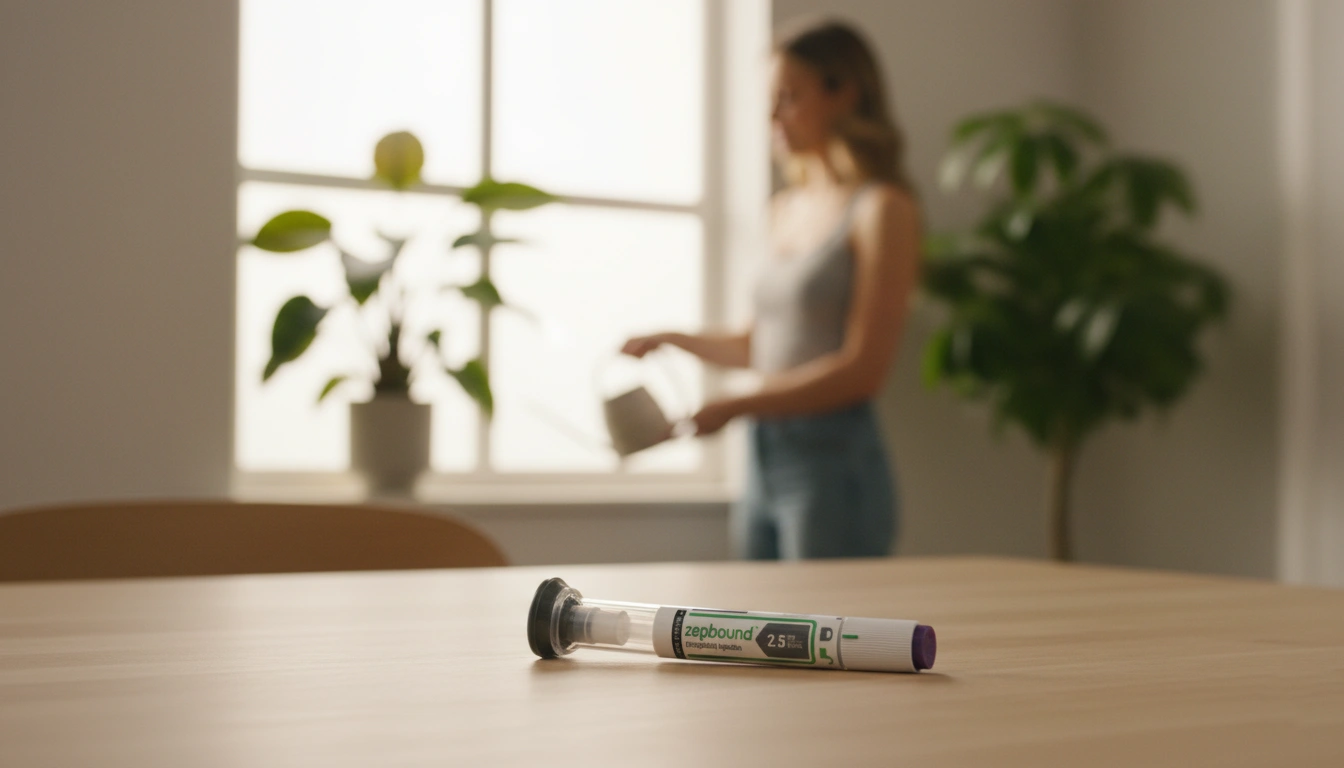How to Dose Zepbound: A Comprehensive Guide for Effective Weight Management

Introduction
Did you know that over 70% of adults in the United States are either overweight or obese? This staggering statistic highlights the critical need for effective weight management solutions. In recent years, medications like Zepbound (tirzepatide) have emerged as promising options for individuals seeking to manage their weight alongside lifestyle changes. As a dual-action medication, Zepbound not only helps control weight but also addresses related conditions such as obstructive sleep apnea.
At TrimRx, our mission is to provide personalized and medically supervised weight loss solutions, and understanding how to properly dose Zepbound is essential for those considering this treatment option. By the end of this blog post, we aim to empower you with the knowledge needed to navigate Zepbound’s dosage regimen effectively. We will cover the recommended dosing schedules, factors affecting dosage, potential side effects, and the importance of a comprehensive weight management plan.
Let’s take this journey together as we explore how to dose Zepbound effectively and safely.
Overview of Zepbound
Zepbound is an injectable medication that belongs to a class of drugs known as GLP-1 receptor agonists. It is primarily used to aid weight loss in adults with obesity or overweight who have at least one weight-related condition, such as type 2 diabetes or hypertension. Zepbound works by mimicking the effects of incretin hormones, which help regulate insulin and glucose levels, ultimately reducing appetite and food intake.
Key Features of Zepbound
- Administration: Zepbound is administered via subcutaneous injection, typically once a week.
- Dosage Forms: It is available in both a pre-filled pen and a vial for use with a syringe.
- Strengths: Zepbound comes in various strengths, including 2.5 mg, 5 mg, 7.5 mg, 10 mg, 12.5 mg, and 15 mg per injection.
Understanding how to dose Zepbound effectively is crucial for achieving optimal weight loss results while minimizing potential side effects.
Recommended Dosing Schedule
The dosing schedule for Zepbound is designed to allow for gradual adjustments based on individual responses and tolerance. Here’s how the dosing typically progresses:
Starting Dose
- Initial Dose: The recommended starting dose for Zepbound is 2.5 mg once weekly. This dose is intended to help your body acclimate to the medication.
- Duration: You will remain on this initial dose for four weeks.
Maintenance Dose
After the initial four weeks, your healthcare provider will likely increase your dosage based on your individual needs and tolerance. The maintenance dosing schedule is as follows:
- Increase to 5 mg: After four weeks on the initial dose, the dose will increase to 5 mg once weekly.
- Further Increases: If additional weight loss is desired and well-tolerated, your healthcare provider may continue to increase the dose in 2.5 mg increments every four weeks, up to a maximum of 15 mg once weekly.
Important Considerations
- Individual Response: The maintenance dose may vary based on individual weight loss goals, tolerance, and any side effects experienced.
- Consultation: It is vital to have regular consultations with your healthcare provider to assess your progress and make necessary adjustments to your dosing schedule.
Factors Affecting Zepbound Dosage
Several factors can influence the dosage of Zepbound that is appropriate for you. Understanding these factors is essential for optimizing your treatment plan.
Body Weight and Composition
Your starting body weight and composition can impact how Zepbound is metabolized in your system. Generally, individuals with higher body weights may require higher doses to achieve the desired weight loss effects.
Comorbid Conditions
If you have other medical conditions — such as diabetes, hypertension, or gastrointestinal issues — your healthcare provider may adjust your Zepbound dosage to account for these factors. For instance, individuals with a history of gastrointestinal disorders may be started on a lower dose due to the potential for gastrointestinal side effects.
Tolerance and Side Effects
Your body's response to Zepbound is crucial in determining the appropriate dosage. If you experience significant side effects at a lower dosage, your healthcare provider may choose to keep you on that dose longer or increase the dose more gradually.
Adherence to Lifestyle Changes
Zepbound is most effective when combined with a reduced-calorie diet and increased physical activity. Your commitment to these lifestyle changes can also influence the dosing strategy, as the medication is designed to complement these efforts.
Administering Zepbound
Administering Zepbound correctly is vital for ensuring its efficacy and safety. Here are the steps to follow for a successful injection:
Preparation
- Choose the Injection Site: You can inject Zepbound in your abdomen, thigh, or upper arm. It’s best to rotate injection sites to avoid irritation.
- Inspect the Medication: Ensure that the Zepbound solution is clear and colorless to slightly yellow. Do not use it if it appears cloudy or has particles.
Injection Steps
- Wash Your Hands: Always wash your hands thoroughly before handling the injection.
- Prepare the Injection: If using a vial, draw the prescribed dose into a syringe. If using a pen, remove the cap and attach the needle if necessary.
- Clean the Injection Site: Use an alcohol swab to clean the area where you’ll inject.
- Inject the Medication: Pinch the skin around the injection site, insert the needle at a 90-degree angle, and inject the medication. Hold it in place for at least 10 seconds to ensure the full dose is administered.
- Dispose of the Needle: Safely dispose of the used needle in an FDA-cleared sharps container.
Safety and Storage
- Storage: Store Zepbound in the refrigerator (between 36°F and 46°F) until it is ready to be used. If stored at room temperature, it should not be returned to the refrigerator and must be used within 21 days.
- Missed Dose: If you miss a dose, take it as soon as you remember within four days. If more than four days have passed, skip the missed dose and continue with your regular schedule.
Potential Side Effects
Like any medication, Zepbound can cause side effects. It’s essential to be aware of these to manage them effectively:
Common Side Effects
- Gastrointestinal Issues: Nausea, diarrhea, vomiting, and abdominal pain are the most commonly reported side effects. These often diminish over time as your body adjusts to the medication.
- Injection Site Reactions: You may experience redness, swelling, or pain at the injection site.
Serious Side Effects
While rare, some serious side effects may occur, including:
- Pancreatitis: Signs include severe abdominal pain, which may radiate to the back.
- Kidney Problems: Dehydration due to gastrointestinal side effects can lead to kidney issues.
- Thyroid Tumors: There is a potential risk of thyroid tumors; report any unusual lumps or swelling in the neck to your healthcare provider.
The Importance of a Comprehensive Weight Management Plan
While Zepbound can significantly aid in weight loss, it is most effective when combined with a comprehensive weight management plan that includes:
- Dietary Changes: Focus on a balanced, reduced-calorie diet that emphasizes fruits, vegetables, whole grains, and lean proteins.
- Physical Activity: Aim for at least 150 minutes of moderate-intensity exercise per week, combining cardiovascular and strength-training activities.
- Behavioral Support: Engaging in behavioral therapy or support groups can help address emotional eating and provide motivation.
At TrimRx, we believe that successful weight management is a journey that requires a supportive and personalized approach. Our team is here to assist you in creating a tailored plan that complements your Zepbound treatment, including regular consultations and ongoing support.
Conclusion
Understanding how to dose Zepbound effectively is crucial for maximizing its benefits in your weight loss journey. Starting with a carefully monitored initial dose, gradually increasing as needed, and adhering to a comprehensive weight management plan will enhance your chances of success. Remember, regular communication with your healthcare provider is key to adjusting your dosage and ensuring a safe and effective treatment experience.
If you're considering Zepbound as part of your weight loss journey, we encourage you to take our free assessment quiz to see if you qualify for our personalized weight loss program. Together, we can create a plan that meets your unique needs and helps you achieve your goals.
FAQ
How quickly can I expect to see results from Zepbound?
Results can vary, but many individuals begin to notice weight loss within the first few weeks of treatment. However, the medication is designed to support long-term weight management.
Can I take Zepbound with other medications?
It's essential to discuss any other medications you are taking with your healthcare provider, as Zepbound may interact with certain medications, particularly those for diabetes.
What should I do if I experience side effects?
Inform your healthcare provider of any side effects you experience. They can help determine if adjustments to your treatment plan are necessary.
Is Zepbound safe for long-term use?
Zepbound is intended for long-term use; however, it's crucial to have regular check-ins with your healthcare provider to monitor your health and adjust your treatment plan as needed.
Where can I find more information about Zepbound?
For more detailed information about Zepbound and to explore personalized weight loss solutions, visit our website at TrimRx. We're here to support your journey to better health.

Transforming Lives, One Step at a Time
Keep reading
Navigating Your Path: How Many Doses Are In Zepbound and What It Means for Your Health Journey
Curious how many doses are in Zepbound? Discover its weekly dosing schedule, available strengths, and titration process for effective weight loss. Learn more!
Navigating Your Zepbound Journey: Understanding Dosing and Expert Guidance
Wondering how to split doses of Zepbound? Learn why it’s unsafe & not recommended. Get expert guidance on Zepbound dosing for safe, effective weight loss with TrimRx. Click to learn more!
Understanding Zepbound Dosing: What is the Lowest Dose Available for Your Weight Loss Journey?
Curious what is the lowest dose of Zepbound available? Learn about Zepbound’s 2.5mg starting dose, titration, and safe use for weight loss. Get expert guidance!



